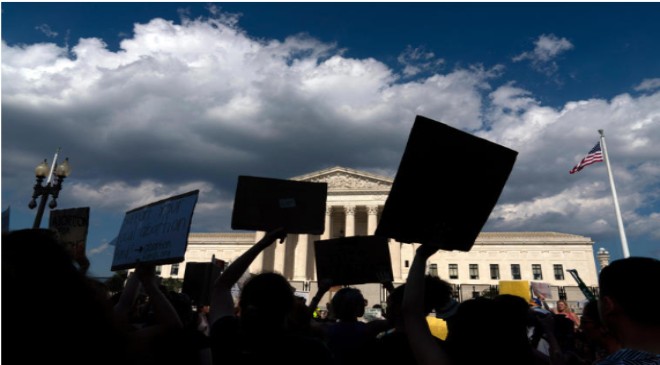The Supreme Court on Thursday issued two 5-4 decisions, and the makeup of the minority in each case served as a reminder of how unpredictable the justices can be.
Read More:- Silver’s model predicts win for Trump in 2024 presidential election
In a case about the Environmental Protection Agency’s plan to reduce ozone pollution, Justice Amy Coney Barrett wrote a dissent joined by the court’s three more-liberal justices. She argued that the majority was wrong to temporarily block the plan from taking effect, since, in her view, the states challenging the EPA’s actions are unlikely to succeed in the long run.
And in a case about Purdue Pharma’s settlement with families affected by the opioid epidemic, Justice Brett Kavanaugh wrote a dissent joined by two liberal justices and Chief Justice John Roberts. He said that by disrupting the current settlement agreement, the majority was causing unnecessary harm.
“Today’s decision is wrong on the law and devastating for more than 100,000 opioid victims and their families,” Kavanaugh said.
Read More:- Presidential candidate gets a huge boost in crucial swing state poll
Trump’s Supreme Court appointments
With their dissents, Barrett and Kavanaugh called to mind past debates about whether former President Donald Trump’s Supreme Court picks have turned out to be less conservative than they were expected to be.
Justice Neil Gorsuch is typically at the center of these debates, since he had the most memorable defection from the Supreme Court’s conservative camp in recent years, as the Deseret News previously reported.
In 2020, he joined with Roberts and the four liberal justices then on the court to rule that prohibitions on sex discrimination protect gay and transgender workers. Gorsuch wrote the majority opinion.
Read More:- Donald Trump’s Chances of Beating Biden In Pennsylvania, According to Polls
That ruling was back in the news this week when the Supreme Court agreed to wade into the debate over transgender rights again by hearing a case about gender-related health care for minors.
But Gorsuch has also stuck by his fellow conservative justices plenty of times since his appointment to the court, as he did in the Supreme Court rulings released Thursday morning.
Gorsuch authored the Purdue Pharma and EPA rulings that Barrett and Kavanaugh dissented to, and he joined part of Justice Samuel Alito’s scathing dissent in the Idaho abortion case, as the Deseret News previously reported.
Read More:- Kellyanne Conway’s Donald Trump Crowd Size Claim Sparks Jokes, Pushback
The same is true for Barrett and Kavanaugh. They regularly side with their fellow conservative justices, albeit not as often as Trump’s supporters may have expected them to.
Supreme Court and the 2024 election
When the Supreme Court comes up during election season, it’s often talked about as if the mix of conservative and liberal justices will tell you all you need to know to perfectly predict future rulings.
In reality, every justice has some surprises up his or her sleeve, including the three justices in the current court’s more liberal wing.
For example, President Joe Biden’s lone appointment to the court, Justice Ketanji Brown Jackson, ruled with Gorsuch and three other conservatives on Thursday in the Purdue Pharma case.
If she had joined with her two fellow liberals and Roberts instead on Kavanaugh’s dissent, it could have become the majority opinion.







































